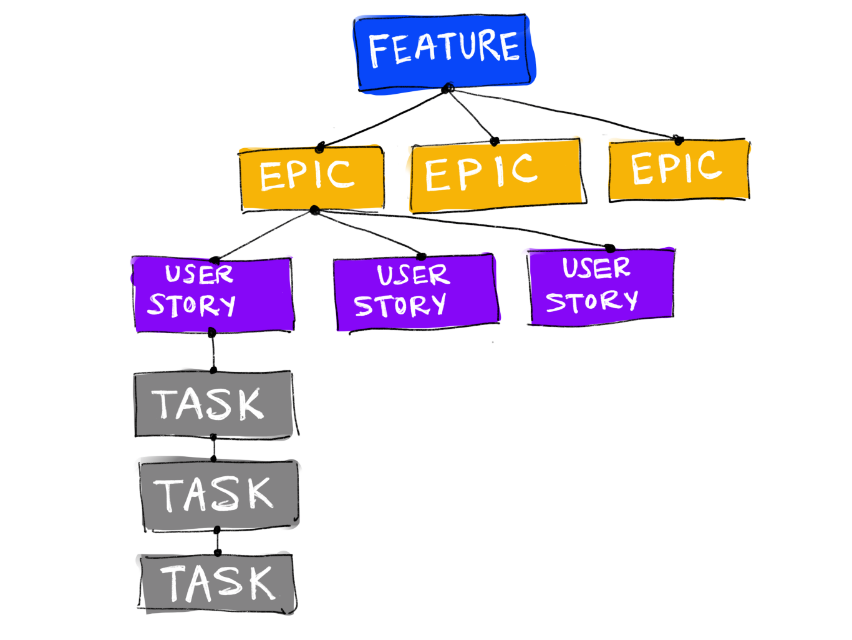Creating your Backlogs
The Goal
You and your team will create a product backlog. A product backlog is a list of all the work that needs to be done. As the project progresses, it gets refined on an on-going basis.
The backlog items will guide the creation of the project’s deliverables. It can be displayed on a wall using sticky notes or managed digitally with software.
Your Project Backlog
In agile, work is broken down into chunks that are small enough to create, test, and deliver within a sprint.
Work is broken down into these main categories:
Feature A main functionality of the final product.
Epic A way to break features into smaller chunks of work. If an epic is too large to be delivered in one iteration, it needs to be further broken down.
User story A user-centric way to capture requirements and break down epics. The user story is small enough to be designed, coded, and tested in one iteration.
Task Individual units of work to be performed.

Good Questions to Ask
Good questions to ask yourself:
- Do I have an idea of the value of these features based on my customer and team feedback?
Good questions to ask the team:
-
Do the user stories address who needs the product, what they need, and why they need it?
-
Do my user stories logically roll up into epics and again into product features?
Create Your Backlog
A product backlog is a list of all the work that needs to be done. As the project progresses, it gets refined on an on-going basis.
You and your team will start to create your product backlog items. This backlog will guide the product development.
As a team, start by capturing the features and the epics.
Feature and Epics
The product vision is delivery of software that helps regulate the temperature, moisture, and light exposure of the plants and soil in GrowBot. As the product owner, you are responsible for helping the team prioritize the most valuable work.
Delivering value is the essence of project management. An agile approach will allow you to develop your project iteratively over time, improving the product with each release, and to ensure the most valuable product is released to the market.
Remember, features describe the main functionality of the product. Epics are a way to break features into smaller chunks of work.
Accepance Criteria
While your backlog is off to a good start, it’s important to note that for every feature, epic, user story, and task, your team will need to create acceptance criteria.
Acceptance criteria are a set of statements, each with a clear pass/fail result that define whether or not the task has been properly completed.